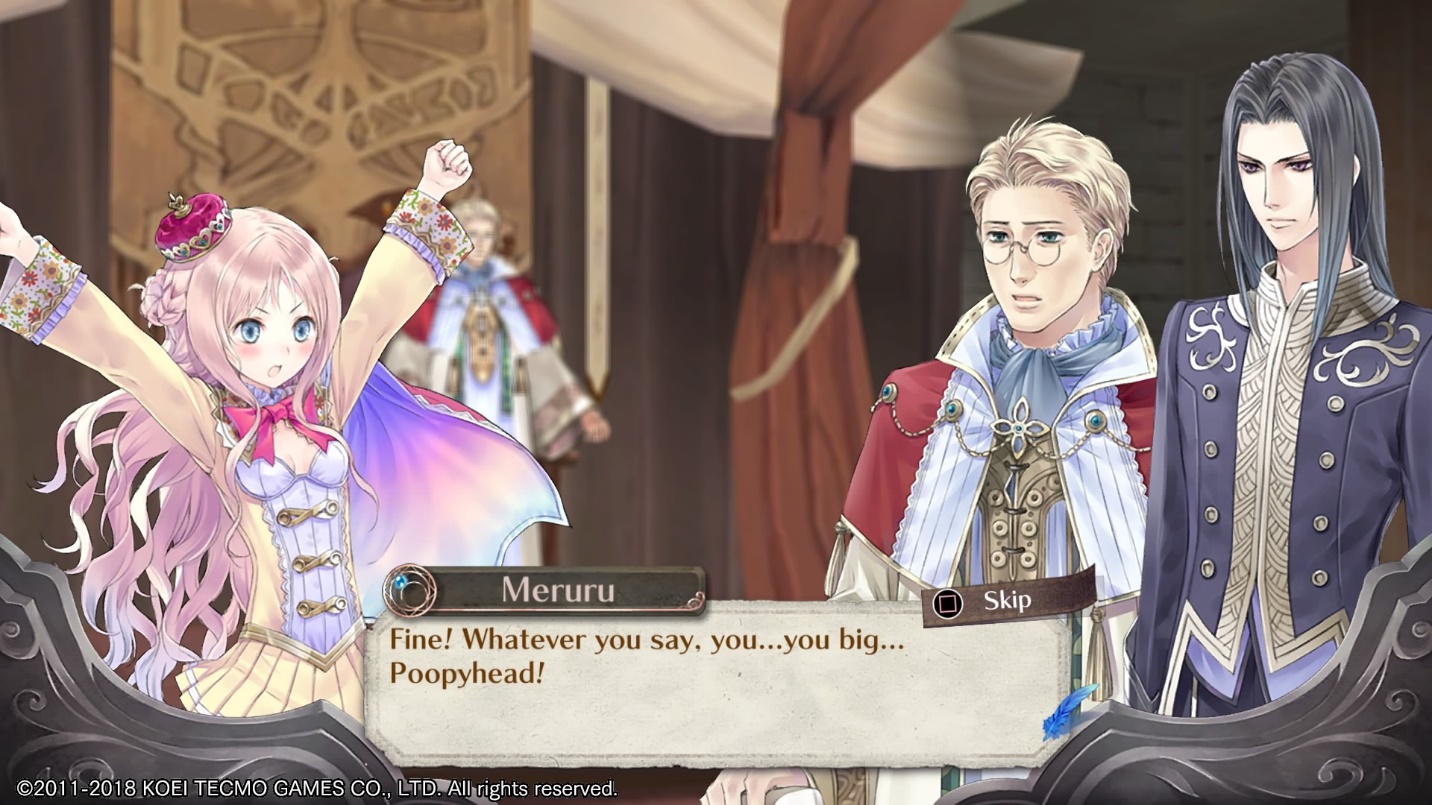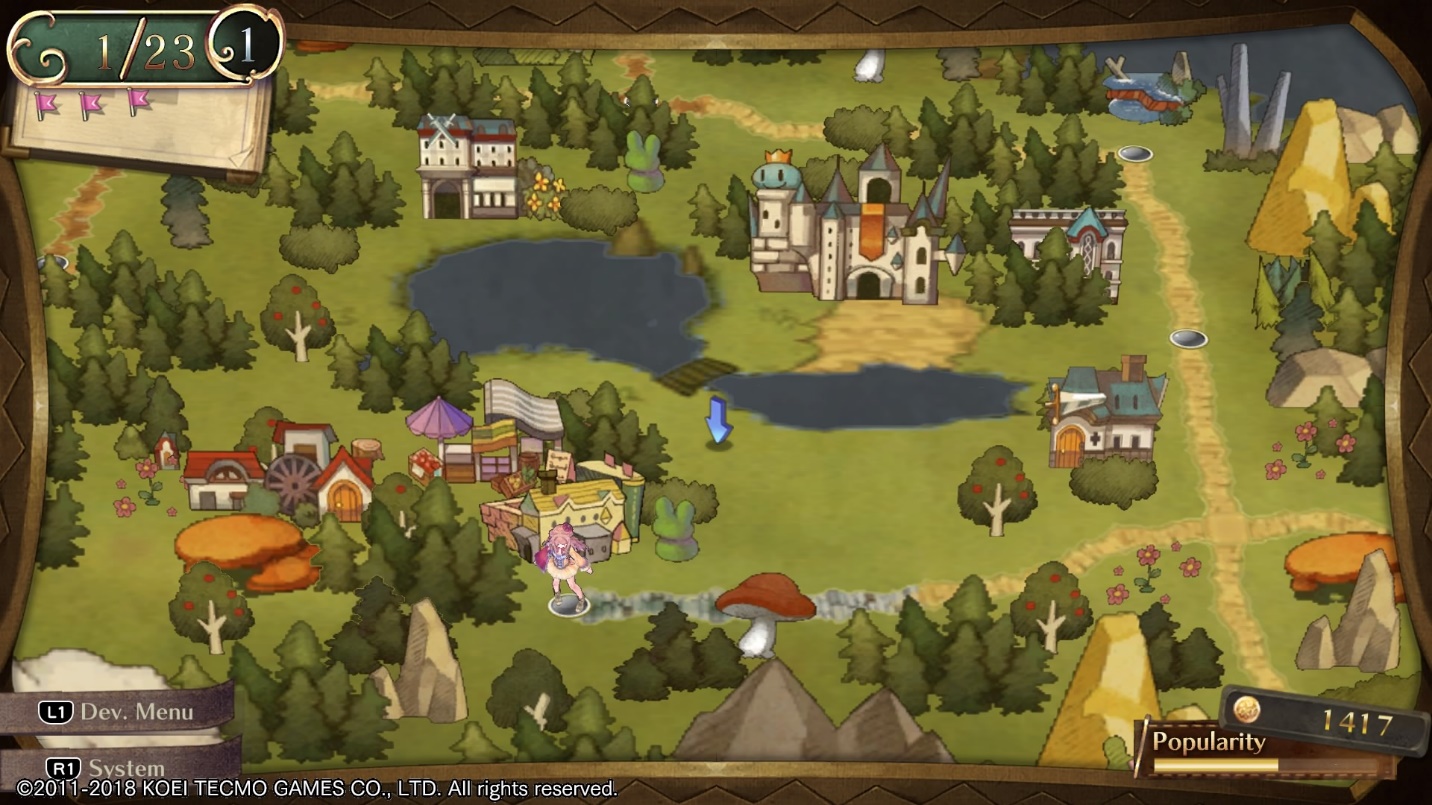The third and final instalment (for now) on the Atelier Arland Series, Atelier Meruru starts off in the rural kingdom of Arls far from the republic of Arland. Governed by Lord Dessier who wishes to merge with Arland to become a republic in three years’ time. But unlike her father, Princess Merurulince Rede Arls pay no attention to politics. She often sneaks out of the castle to meet her mentor Totori from the previous game to learn alchemy.

Totori now runs a small alchemy workshop after being requested by the kingdom of Arls which doesn’t utilize alchemy or see its widespread practice. While the princess is usually the happy-go-lucky with the lack of drive to do anything, she finally found her passion with alchemy although her father wishes her to perform her royal duties as a princess before the merge with both kingdoms. With both of them not seeing eye to eye, she would then eventually be doing both at once and performing her duties with alchemy itself.
Now unlike the first two games that came before, an alchemist trying to save their workshop from shutting down and an adventurer that hopes to find her missing mother, Atelier Meruru would be focused on a grand scale. As in world building! Which I honestly find as an interesting take to the trilogy or the whole franchise for that matter. The idea of improving a kingdom as a princess and an alchemist has never crossed my mind. First of all, I’m a guy and I’m bad at cooking anything for that matter… much more so on alchemy.

However the setup is fairly simple. Similar to the adventurer tasks for Atelier Totori, Meruru has to achieve certain feats in order to obtain development points in order to develop the kingdom and grow the populace which will be the goal of the game. You’d have things like defeating all enemies in an area in order to open a new path to explore, delivering supplies to the people that could be used to build a farm or build defenses against the overflowing monster infestation. But what makes it rewarding is the visual changes that happen as you do it. Whether you’re building an academy through the development window, you’d be able to see the overworld with new structures as they get built in a matter of days.
There’s also a new way to learn recipes. That way which is a bit more obvious considering you’ve actually have an alchemy teacher with you along the way means you’d be learning new alchemy recipes from Totori as you level up. Similarly, another change from Atelier Totori is the removal of required days on requests. This makes it a bit easier to manage your workload and focus on kingdom development and alchemy while still being able to turn in requests at your own pace.

Characters… well just like the first two games. It’s going to be the same old thing but nevertheless with a unique cast of personalities to meet and greet. Keina Swaya, the childhood friend of the princess and Lias. She’s also the personal assistant that shares a special bond with Meruru as if they’re twin sisters. Lias Falken however is the castle gatekeeper and younger brother of Rufus Falken who is the advisor and butler to the King of Arls while also assisting Meruru in performing her royal duties. Apart from the few others like Hanna Olses who has an outdoor shop at Namiki Road and Lord Dessier, most of which are returning characters from the previous games which is always a plus like Mimi Houllier von Schwarzlang who happens to be Totori’s self-proclaimed rival as an adventurer or the ever shiny-head Hagel Boldness from the weapon shop.
Visually… not again?! Mel Kishida’s artistry is at work here and I can’t simply find the fault to it. The art-style is just something to die for. Meruru whom is my favorite offers what seems to be a princess-styled casual wear with a mini crown and her long wavy hair just tugs at my heartstrings. If you’ve read my review of the previous two arland games then I don’t think I need to repeat myself here. Which I won’t but let me say this, the environments are still… not as visually stunning as the character design.

Overall, Atelier Meruru offers another unique experience to the trilogy and expands on an ever-changing system while keeping the basic time management elements intact. While I honestly can’t say it’s a game that I’d recommend for its story like Atelier Totori had, it is however a game I would rather play for its content and world building. Should you feel the need to choose one than the whole pack which is obviously a cheaper choice of £73.99 than a £32.99 each if you’d eventually grab them all then it really depends on how you’d want to enjoy the game. Each of the three games are unique on its own right and definitely deserves a spot to anyone’s heart. The games are available on Nintendo Switch and Playstation 4 in Japan but released worldwide with the added PC Version.








You must be logged in to post a comment.